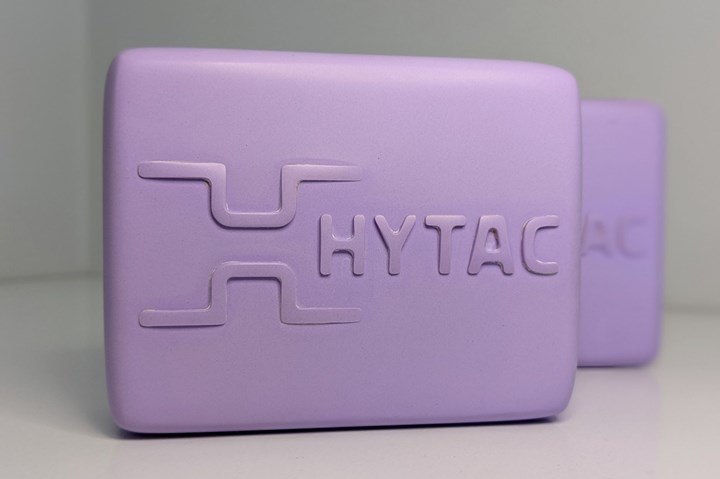Syntactic Foam With High Service Temperature and High Friction for Thermoforming
NPE 2024: CMT Materials showcases new plug-assists Hytac HTF copolymer syntactic foam.

The latest addition to the Hytac portfolio of syntactic foam plug-assist materials for the thermoforming industry is being launched by CMT Materials, and is said to be well suited for “sticky” materials and a range of other high-performance applications. Available in a variety of sheet and rod sizes, Hytac HTF is the latest in toughened copolymers that are easy to use and extend the performance range to fill challenging market needs, according to John Moy, Hytac sales and marketing manager. The company has witnessed strong growth for Hytac HTF and is the culmination of collaborative work with leading thermoforming companies to optimize plug-assist material choices.
Hytac HTF syntactic foam is capable of high service temperature performance (232°C/450°F) based on a toughened copolymer formulation and microsphere size which is the smallest CMT Materials has ever used. It is said to enable lower heat transfer between the plug and sheet. The plug-assist material promotes evenly distributed material throughout the entire part and is excellent for deep-draw applications due to its high friction. It is easily polished to a mirror-like surface while maintaining optimal friction properties, making it an ideal choice for use with sticky barrier films to minimize plug buildup. In barrier applications, Hytac HTF has been shown to reduce additive buildup and cleans quicker, thus reducing downtime and labor cost. The material’s small microsphere size facilitates the production of highly transparent and clear parts. Moreover, such copolymer plug materials also provide dust-free machining and high strength. Its durability makes it highly effective in pushing the film into smaller corners and other troublesome areas.
Related Content
-
Polymer Science for Those Who Work With Plastics: Why Entanglements — Not Just Molecular Weight — Drive Plastic Performance
Ever try running your fingers through tangled hair? Yeah … that’s not fun, but that’s what happens at the molecular level when polymer chains reach the right length. They wrap around each other, intertwine and … get stuck — and those tangles are the real reason plastics perform the way they do.
-
Let's Take a Journey into the World of Molding Thermosets – Part 1
There are many fundamental differences between thermosets and thermoplastics, from the way raw materials are furnished to the molder and the process in which parts are molded.
-
Polymer Science for Those Who Work With Plastic — Part 1: The Repeat Unit
What are the basic building blocks of plastics and how do they affect the processing of that material and its potential applications in the real world? Meet the repeat unit.


